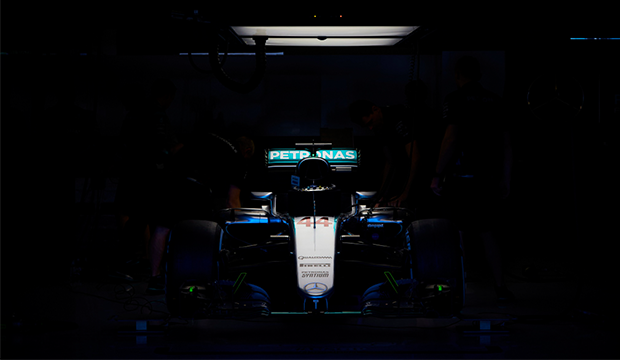Path to the Podium: Lights Out
Blog: The Tibco Blog
While the speed of the race suggest that Formula One is like a two hour sprint, in reality, it’s closer to running a marathon that leads to a sprint. During both, the team needs to operate flawlessly. After a week’s worth of preparation, the lights go out and the drivers begin a 189 mile/two hour long race race. Teams and drivers need to expect the unexpected, as a car’s run could end as early as the first turn. They need to utilize predictive analytics throughout the race to anticipate the car’s performance and that of the competition.
The car is going at top speeds of 225 miles per hour/360 kilometers per hour and has over 300 sensors that collect 10,000 unique data components. This amounts to 150 GB computed over the course of a race weekend. The drivers are a rare mix of athletic brilliance with an engineer’s mind. They consult the data from their car, their laps, and leverage it to understand more once they’re off the car. The data tells them the impact of the configuration change, the gains of speed or time that is accessible to them, and how to achieve it.
Predictive analytics allows teams to identify early the required changes to adapt immediately and seize opportunities and prevent mistakes. Key data points and decisions need to be communicated and clearly understood by all stakeholders so teams are able to act on decisions immediately.
The performance of the car hinges on the engineers who monitor the cars closely and propose the best configurations to drivers to prevent issues or maximize performance. In order to maintain their performance, the cars need to stop at least once in the pits as they have to use two different types of tires and repair the car when possible in case of contact with other cars. The timing of the pit changes is crucial as drivers can’t lose their position relative to their competitors by taking too long of a stop. Drivers need to know the car inside and out to get a feel for when there is something wrong. They then need to communicate any malfunction to the rest of the team so it can be fixed as soon as the driver stops in the pit.
Teams leads need to be able to identify opportunities based on the drivers’ fortunes and misfortunes. Events such as the safety car appearance or a change in weather can make or break a strategy instantly, requiring the team to adapt in an instant. Drivers have to heed the recommendations of the team leads in order to help out their teammate or to prevent the competition from placing on the podium.
Every decision made can make or break a team’s chances of winning a race. Every lap matters, as does every second. However, it’s not just every second that matters, but every 1/1000 of a second. That’s all it takes to win a F1 race.
See how TIBCO’s Insight Platform gives Mercedes-AMG Petronas Motorsport a competitive advantage.
Leave a Comment
You must be logged in to post a comment.








